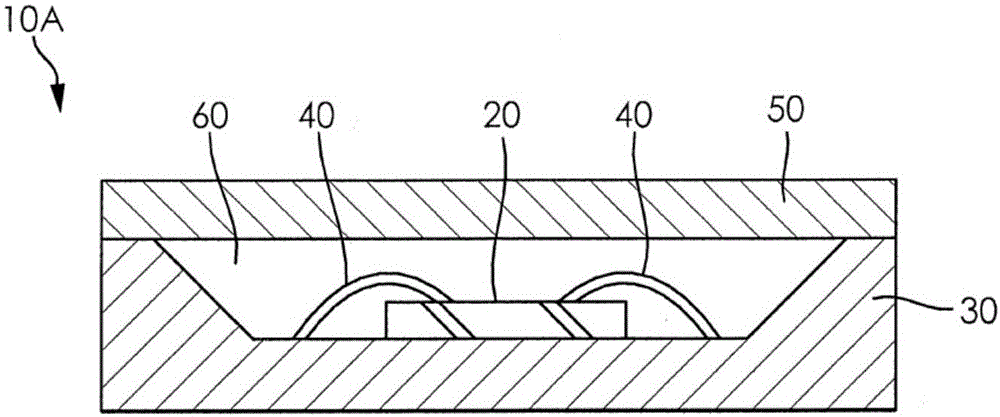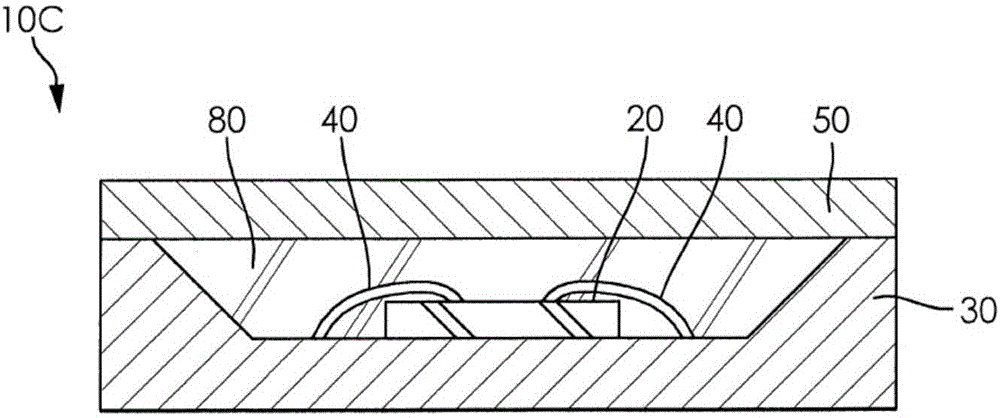Glass compositions and glass frit composites for use in optical applications
A technology of glass frit and compound, applied in the direction of electric solid-state devices, semiconductor devices, electrical components, etc., can solve the problems of LED package chromaticity and/or output deviation, reduce the effective life of LED package, etc.
- Summary
- Abstract
- Description
- Claims
- Application Information
AI Technical Summary
Problems solved by technology
Method used
Image
Examples
Embodiment
[0108] The following examples are provided to generally illustrate various embodiments according to the inventive subject matter and should not be construed as limiting the inventive subject matter.
[0109] Various lead, bismuth and zinc glasses were analyzed for use according to the subject matter of the invention (Table 2). Barium, magnesium and calcium glasses are also contemplated. Due to the desire to have a sintering temperature of the glass+phosphor composite below 900°C, the analysis was limited to three main glass systems - lead, bismuth and zinc based glass systems. While lead glasses may have a higher index of refraction and lower firing temperatures than bismuth or zinc glasses, it may be desirable to develop lead-free, cadmium-free glasses to avoid harmful components.
[0110] Various bismuth glasses based on bismuth-zinc-silicate and bismuth-zinc-borate glass systems are analyzed. These bismuth glasses tend to crystallize (note that this is different from an i...
PUM
| Property | Measurement | Unit |
|---|---|---|
| particle size | aaaaa | aaaaa |
| size | aaaaa | aaaaa |
| particle size | aaaaa | aaaaa |
Abstract
Description
Claims
Application Information
 Login to View More
Login to View More - R&D
- Intellectual Property
- Life Sciences
- Materials
- Tech Scout
- Unparalleled Data Quality
- Higher Quality Content
- 60% Fewer Hallucinations
Browse by: Latest US Patents, China's latest patents, Technical Efficacy Thesaurus, Application Domain, Technology Topic, Popular Technical Reports.
© 2025 PatSnap. All rights reserved.Legal|Privacy policy|Modern Slavery Act Transparency Statement|Sitemap|About US| Contact US: help@patsnap.com



